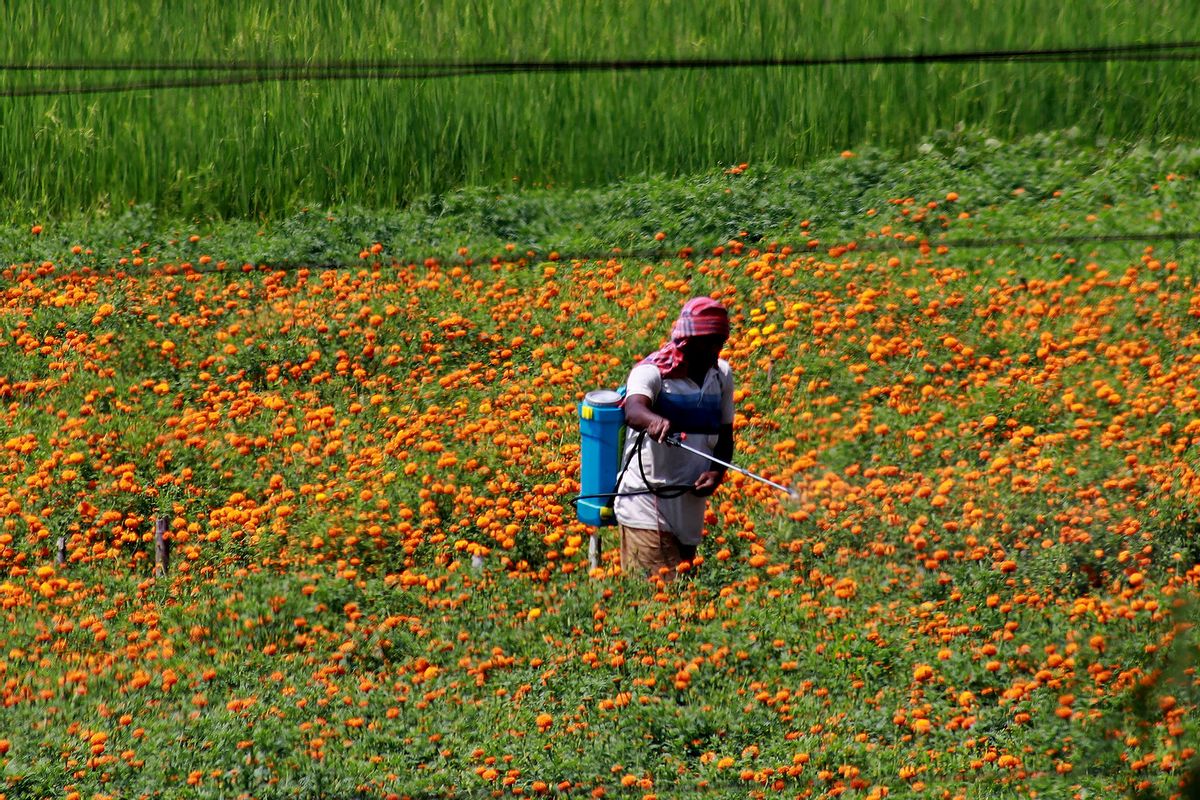The Environmental Protection Agency (EPA) announced on Thursday that it is proposing a new slate of protections for 27 species that are most vulnerable to pesticide use. Among the lucky creatures to be covered by these regulations are an extremely rare two-inch toad from the Rocky Mountains, a beautiful wild chicken whose males sport orange or golden air sacs on their necks and a beetle that was controversially thrown under the bus by a notoriously anti-environmental former American president, Donald Trump.
Neonicotinoids are the pesticides most notorious for being linked to the collapse of bee colonies throughout the world — a development that could endanger the global food supply.
In a draft white paper continuing policies started last year by the EPA's Vulnerable Species Pilot program, the agency announced a proposal to limit pesticide use within specific regions to protect 27 of the "most vulnerable endangered species," according to the official press release. The agency linked this new policy to the fact that at the time it was announced, it was National Pollinator Week.
"Pollinator health affects biodiversity, ecosystems, global food supplies, and human health," EPA Deputy Assistant Administrator for Pesticide Programs Jake Li explained in the statement. "The proposed mitigations we're announcing today are tailored to where these 27 listed species, including pollinators, live and our new maps make it easy for people to find and visualize this important information."
Among the species that would benefit is the Wyoming toad, which is perhaps most famous for inhabiting the wild only in a single sanctuary in Mortensen Lake National Wildlife Refuge. Featured in either dark green, grey or brown, this tiny toad (it grows up to a mere 2.2 inches in length) once had broad range, existing all over southeastern Wyoming, but today has reached the verge of extinction due to a number of man-made causes.
"A very charming little toad!" exclaimed Lori Ann Burd, environmental health director at the Center for Biological Diversity, which has long advocated for stronger anti-pesticide policies like this from the EPA. "Highly endangered. Amphibians in general are very susceptible to pesticide impact because of living in and out of water. They get multiple routes of exposure because their skin is very porous." Burd also expressed excitement that the Attwater's greater prairie chicken is on the new list.
"It's the only bird on that list," Burd pointed out to Salon. "It was just found to be imperiled by neonicotinoid insecticides." Neonicotinoids are the pesticides most notorious for being linked to the collapse of honeybee colonies throughout the world — a development that could endanger the global food supply. Many countries have banned them, but not the United States.
Indeed, the rusty patched bumble bee appears on this list for similar reasons, with the EPA observing that the highly intelligent and social bee species began to experience a severe population decline in 2007 due to a confluence of factors like "pesticides, pathogens, climate change, and habitat loss (and resulting loss of nectar sources and nesting spaces)."
Coincidentally, male Attwater's greater prairie chickens have coloring similar to that of bees, sporting vibrant yellow and black plumage surrounding their necks and faces. These wild chickens are figuratively as well as literally colorful: When the males decide to court females, they gather in an area of either bare ground or short foliage called a "booming groundor lek." They compete by dancing and calling out – not unlike men at a night club.
Want more health and science stories in your inbox? Subscribe to Salon's weekly newsletter The Vulgar Scientist.
"Amphibians in general are very susceptible to pesticide impact because of living in and out of water. They get multiple routes of exposure because their skin is very porous."
Yet perhaps none of the animals on the list have a story quite like the American burying beetle, at least in terms of their political background. In September 2020, the Trump administration controversially downlisted the popular and beautiful bug from endangered to threatened. By doing so, the Trump-era EPA opened up much of the beetle's habitat in Oklahoma to exploitation from oil and gas companies. The strikingly orange-and-black insect had been labeled as endangered since 1989, and the decision to remove its endangered status struck many as motivated by economic considerations rather than any meaningful improvement in the beetle's population. (The Center for Biological Diversity filed a lawsuit the following January.) As of 2020, the American burying beetle's numbers had declined more than 90 percent despite the beetle previously inhabiting much of the eastern United States.
In addition to protecting many animal species, the new EPA policy would extend to many endangered plant species like the Leedy's roseroot, the Mead's milkweed, the Okeechobee gourd and the Palmate-bracted bird's beak. It would be implemented through the dual approach of geographically limited pesticide use restrictions and measures intended to minimize how much harm pesticides can cause to wildlife when they are used. The EPA has also created an interactive website which allows the public to see the full list of protected species and the geographic region that would be covered by the new proposed policies.
That said, although Burd is optimistic that the proposals will be passed, it is "a whole other ball of wax" whether people will actually follow the new regulations.
"The label is the law and failure to comply with the label is illegal and can result in penalties, so I hope they will [follow them]," Burd told Salon. "That's all we have in the world of pesticide regulation: counting on people to follow the label. But I think in the real world, people don't always use pesticides exactly according to the label. I don't think every time any one uses a pesticide, they go to all the websites that are referred to on the label and check them out. But I do think this puts them a notice. This gives them a heads up."



Shares